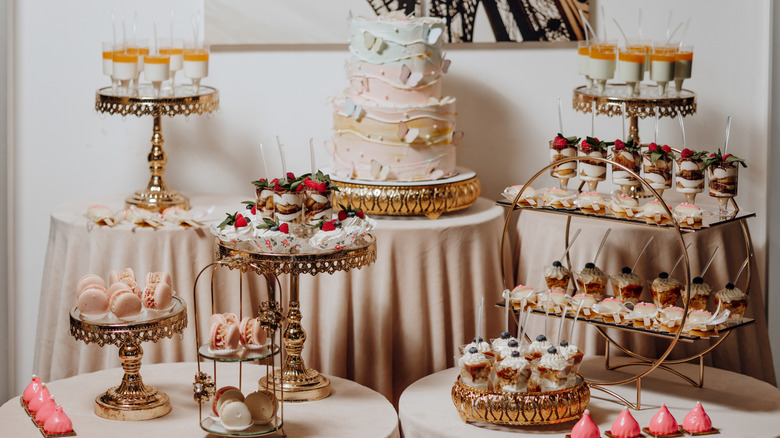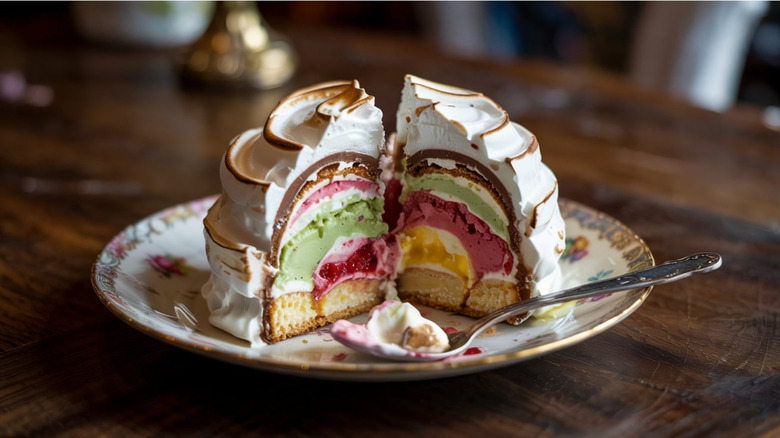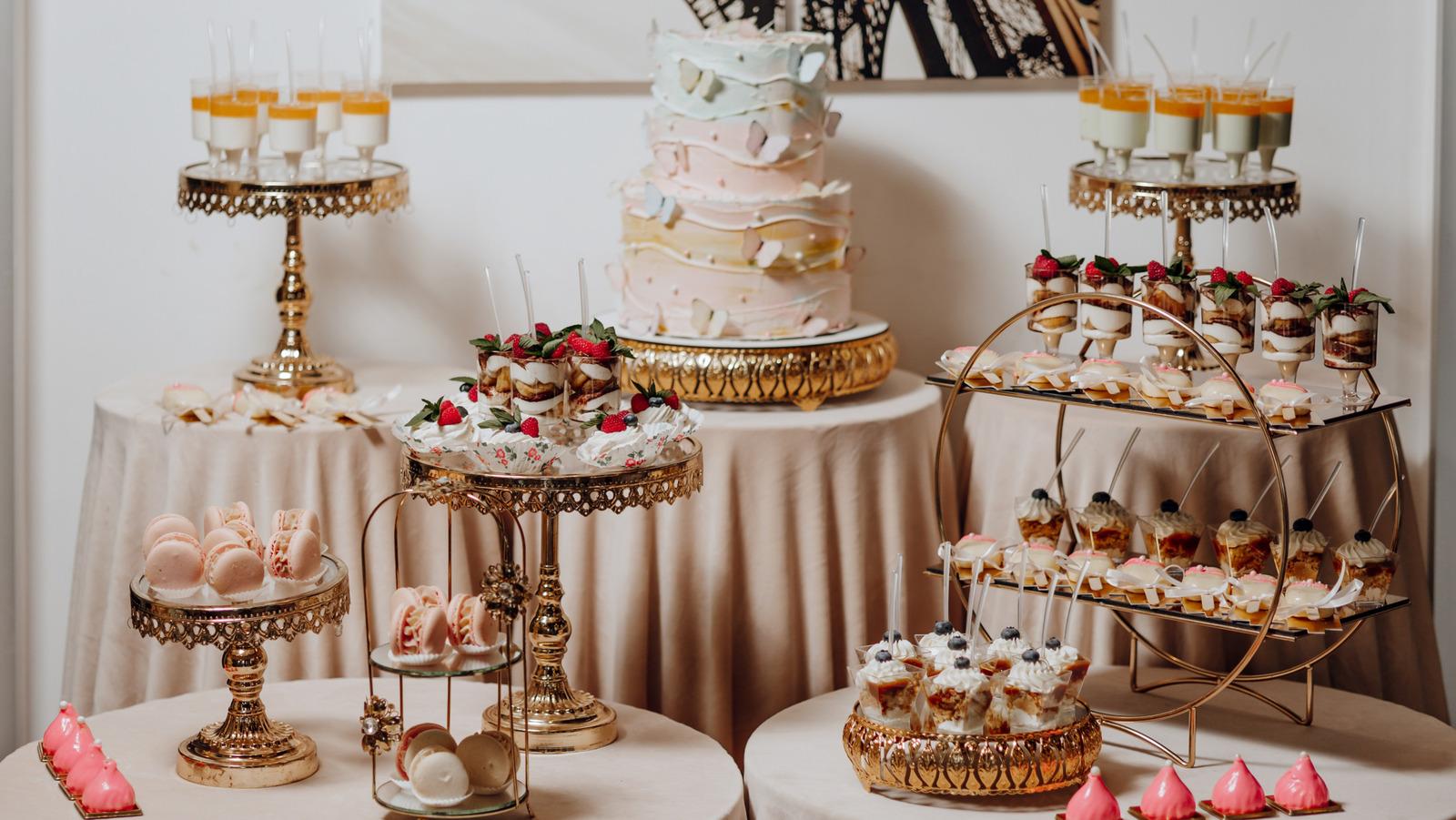
DocPhotos/Shutterstock
When you order cake at a restaurant, chances are it will be beautifully plated — perhaps with a sauce or a few decorative elements to give the dish some flair. However, there's one dessert originating in the 19th century that arrives at your table with a whole different level of theatricality: Baked Alaska. This retro dish consisting of ice cream and a layer of cake wrapped in meringue and then lit on fire is definitely one you want to experience at least once in your life. Still, you may have trouble finding it on menus today, as it's a bit of a relic from the past in need of a comeback.
Charles Ranhofer, a Parisian chef at the New York City restaurant Delmonico's is credited with conceiving the dessert in 1867. (Paying tribute to this fact, the restaurant still has it on the menu.) However, in the 1830s, French chefs were whipping up a dessert called the "Omelette Norwegge," which featured cake and ice cream encased in meringue and then broiled. Ranhofer took inspiration from this dish and the political chatter in America, creating a dessert that he called "Alaska, Florida," sparked by the U.S. Secretary of State William Seward acquiring Alaska the same year. Nevertheless, journalist George Sala is often credited with giving the dessert the name we know today, referencing the combination of a frosty ice cream interior and "baked" meringue exterior
A treat for Gilded Age gourmands

Food is Love/Shutterstock
While executing a flawless Baked Alaska is still an impressive feat today, back when it was initially created, it would have been even more noteworthy. There were no electric ice cream machines, stand mixers to whip up flawless meringue, or blowtorches to effortlessly toast the exterior. It was a time-consuming treat that required many hands on deck to create all the components. While you can combine any flavors of ice cream and cake to create a Baked Alaska, the original version featured bananas, which were considered quite expensive and exotic at the time, as they had to be imported from Central America.
To reflect the effort and exotic ingredients required for the dessert, the original Delmonico's price tag would have been the equivalent of about $40 today. Though you can try it for about $24 now, you'll still get the same flavor experience as a diner in the Gilded Age, as the restaurant still uses the same classic flavor combination of walnut cake, apricot jam and banana gelato.
The dessert menu of many restaurants nowadays is a lot simpler, and the idea of a dessert that requires such precise timing and such a theatrical tableside presentation has fallen out of favor. However, it remains a unique sweet offering. While you're searching for it on a menu near you, we have the recipe for a mint version so you can whip one up at home.



